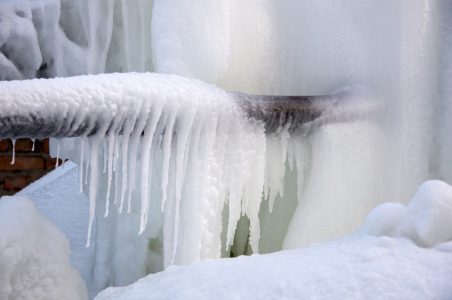Tips to Prevent Frozen Plumbing in Cold Weather: Professional Advice
Tips to Prevent Frozen Plumbing in Cold Weather: Professional Advice
Blog Article
They are making a number of great pointers regarding 6 Ways to Prevent Frozen Pipes in general in this great article just below.

Cold weather can ruin your plumbing, particularly by freezing pipelines. Here's just how to avoid it from taking place and what to do if it does.
Intro
As temperatures decrease, the threat of frozen pipelines increases, possibly leading to expensive repairs and water damage. Recognizing how to avoid icy pipes is important for homeowners in chilly environments.
Recognizing Frozen Pipes
What triggers pipelines to ice up?
Pipelines ice up when exposed to temperatures below 32 ° F (0 ° C) for extended periods. As water inside the pipes freezes, it broadens, putting pressure on the pipeline walls and possibly causing them to burst.
Dangers and damages
Frozen pipes can result in water system disturbances, building damage, and pricey repair work. Ruptured pipelines can flooding homes and trigger substantial architectural damage.
Indications of Frozen Pipeline
Determining icy pipes early can prevent them from breaking.
Just how to recognize icy pipelines
Look for lowered water flow from taps, unusual odors or noises from pipes, and noticeable frost on exposed pipes.
Avoidance Tips
Protecting at risk pipes
Wrap pipelines in insulation sleeves or use warm tape to shield them from freezing temperatures. Focus on pipelines in unheated or external locations of the home.
Heating methods
Keep indoor rooms sufficiently warmed, specifically locations with pipes. Open up closet doors to allow warm air to circulate around pipes under sinks.
Securing Outside Pipes
Garden hoses and exterior faucets
Separate and drain pipes garden tubes before winter. Set up frost-proof spigots or cover exterior taps with insulated caps.
What to Do If Your Pipes Freeze
Immediate activities to take
If you think icy pipes, keep faucets open up to alleviate stress as the ice melts. Make use of a hairdryer or towels taken in hot water to thaw pipelines slowly.
Long-Term Solutions
Structural changes
Take into consideration rerouting pipes away from exterior wall surfaces or unheated areas. Include added insulation to attics, basements, and crawl spaces.
Updating insulation
Invest in high-grade insulation for pipes, attic rooms, and walls. Appropriate insulation aids maintain constant temperature levels and reduces the danger of icy pipelines.
Conclusion
Stopping icy pipelines calls for proactive steps and quick actions. By recognizing the reasons, indicators, and safety nets, home owners can shield their pipes throughout winter.
5 Ways to Prevent Frozen Pipes
Drain Outdoor Faucets and Disconnect Hoses
First, close the shut-off valve that controls the flow of water in the pipe to your outdoor faucet. Then, head outside to disconnect and drain your hose and open the outdoor faucet to allow the water to completely drain out of the line. Turn off the faucet when done. Finally, head back to the shut-off valve and drain the remaining water inside the pipe into a bucket or container. Additionally, if you have a home irrigation system, you should consider hiring an expert to clear the system of water each year.
Insulate Pipes
One of the best and most cost-effective methods for preventing frozen water pipes is to wrap your pipes with insulation. This is especially important for areas in your home that aren’t exposed to heat, such as an attic. We suggest using foam sleeves, which can typically be found at your local hardware store.
Keep Heat Running at 65
Your pipes are located inside your walls, and the temperature there is much colder than the rest of the house. To prevent your pipes from freezing, The Insurance Information Institute suggests that you keep your home heated to at least 65 degrees, even when traveling. You may want to invest in smart devices that can keep an eye on the temperature in your home while you’re away.
Leave Water Dripping
Moving water — even a small trickle — can prevent ice from forming inside your pipes. When freezing temps are imminent, start a drip of water from all faucets that serve exposed pipes. Leaving a few faucets running will also help relieve pressure inside the pipes and help prevent a rupture if the water inside freezes.
Open Cupboard Doors
Warm your kitchen and bathroom pipes by opening cupboards and vanities. You should also leave your interior doors ajar to help warm air circulate evenly throughout your home.

I hope you enjoyed our article about How to Prevent Your Pipes From Freezing. Thanks a ton for taking the time to browse our article. Sharing is good. One never knows, you might be doing someone a favor. I praise you for your time. Come back soon.
Book Now Report this page